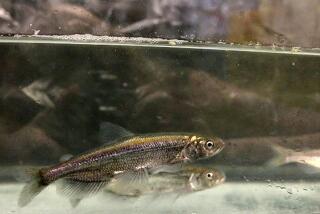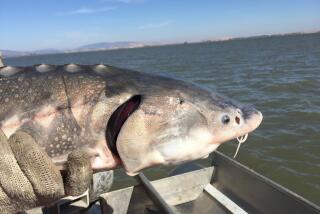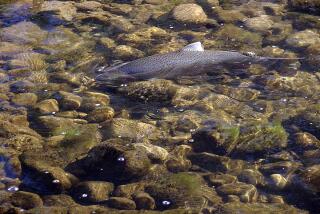131 Strains of Hatchery Fish Now Protected
GRANTS PASS, Ore. â A federal policy issued Thursday puts 131 strains of hatchery salmon under Endangered Species Act protection along with their wild cousins, but allows fishermen to continue harvesting those raised artificially.
Also, the National Oceanic and Atmospheric Administration Fisheries decided not to take 15 salmon and steelhead populations off the threatened and endangered species lists; it added lower Columbia River coho to the threatened list; and it decided to wait six months to determine what to do with 10 listed populations of steelhead and Oregon coastal coho. California coastal coho were changed from threatened to endangered.
The review of Endangered Species Act status for all West Coast salmon and steelhead as well as the new hatchery policy were prompted by a 2001 federal court ruling that NOAA Fisheries could no longer make distinctions between the same strains of salmon and steelhead solely on the basis of whether they spawned in the wild or in a hatchery.
NOAA Fisheries considered more than 300 strains of hatchery fish before deciding that 131 of them were genetically close enough to their wild counterparts to be useful to recovery, said Bob Lohn, Northwest regional administrator.
The agency adopted a rule that hatchery-marked fish -- generally ones whose tiny adipose fin, near the tail, had been clipped -- would not be protected under the Endangered Species Act and thus could still be harvested by fishermen.
âThe reason weâre doing that is to encourage more hatcheries to move toward local brood stock, even if they are primarily producing fish that would be harvested,â Lohn said.
Salmon populations have been declining for more than a century because of overharvesting, habitat destruction and hatchery practices that diluted the gene pool and flooded rivers with fish ill-suited to survive in the wild. Since the 1990s, many hatcheries have adopted new practices that preserve genetic diversity.
More to Read
Sign up for Essential California
The most important California stories and recommendations in your inbox every morning.
You may occasionally receive promotional content from the Los Angeles Times.










